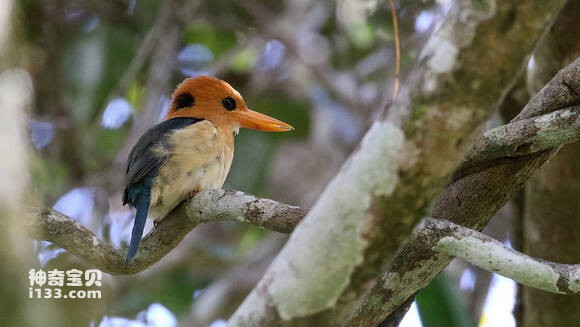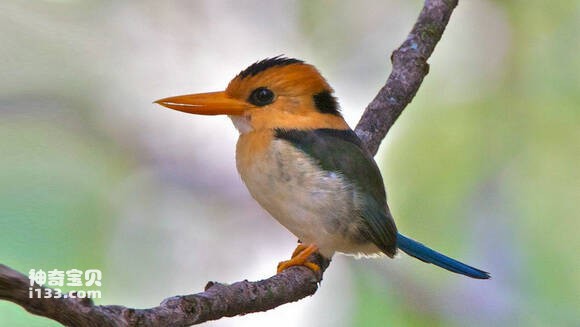Syma torotoro
IUCN
LCBasic Information
Scientific classification
- name:Syma torotoro
- Scientific Name:Syma torotoro,Yellow-billed Kingfisher
- Outline:Climbing birds
- Family:
Vital signs
- length:About 20 cm
- Weight:32-52g
- lifetime:No textual research information is available
Feature
Distribution and Habitat
It is found in the Pacific Islands (including Taiwan, Dongsha Islands, Paracel Islands, Zhongsha Islands, Spratly Islands and the Philippines, Brunei, Malaysia, Singapore, Indonesia's Sumatra, Java Island and Papua New Guinea), Australia and New Zealand (including Australia, New Zealand, Tasmania and nearby islands).
Yellow-billed jadeite occurs in marginal clearings of rain forests, forests, rubber forests and mangroves. Flying low, usually below 500 meters above sea level, the species lives on small islands that are isolated from the outside world.
Appearance
The yellow-billed emerald is 20 cm long and weighs 32-50 g for males and 30-52 g for females. The adult male bird has a bright red head and neck and black eyes. Each side of the neck is black. The mantle is black and the shoulders are dark green. Lower back, front tail blue-green. Blue purple end. Chin and throat white, chest red orange. The flanks, ventrals, tail sections and wings are tan and light yellow or cream. The bottom of the tail is black. The mouth and maxillary margins are bright yellow. The irises are dark brown, with yellow legs and dark brown claws. The adult female differs from the male in that the sides, abdomen and tail are slightly lighter colored. Young birds resemble females with red apex plumage. The black eyes have more space around them, and the feathers on the cheeks and chest are dark. The mouth is grayish black.
The mouth is thick and long like a chisel, the base is wider, the mouth peak is straight, the peak ridge is round, there is no nasal groove on bot
Details
Syma torotoro, Yellow-billed Kingfisher, has three subspecies (1.Syma torotoro torotoro is found in New Guinea, Papua and Aru Islands). 2.Syma torotoro ochracea is found on the island of Dontelcastor and the Yorke Peninsula. 3.Syma torotoro flavirostris is found in Australia.) .

Yellow-billed jadeite usually hunts alone or in pairs. Like most game kingfishers, they are completely carnivorous. Often searching for prey in leaves or dirt. The main diet is invertebrates such as crickets, spiders, scorpions, and snails. It also eats small vertebrates such as small fish, small snakes and lizards.

The breeding season is usually between November and January in Queensland, September and October in New Guinea, Papua New Guinea (and possibly March and August). The nest is built on the earth cliff or on the embankment of the river, and the nest is made by tunnelling holes dug with the mouth. The depth is 9 cm and 12 cm, and the width is 9.5 cm. These caves are generally bare of bedding. The female lays three or four eggs directly on the nest ground. Some also drill holes for nests in the trunks of palm or other trees, up to 3 meters above the ground.
Listed in the International Union for Conservation of Nature (IUCN) ver 3.1:2008 Red List of Birds.
Protect wild animals and eliminate wild meat.
Maintaining ecological balance is everyone's responsibility!








